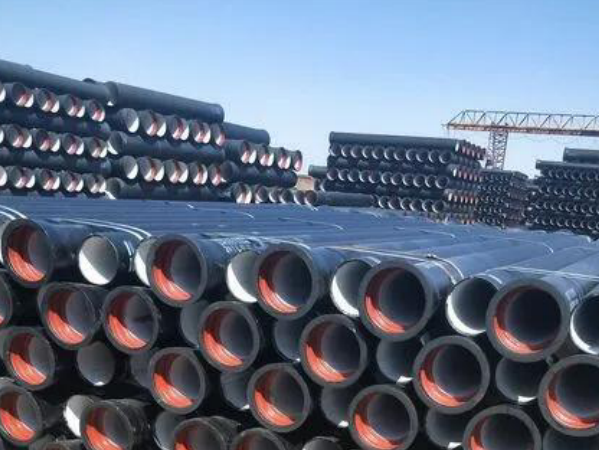
3. The mechanical properties are different. Ductile iron generally has a large diameter, thick pipe wall, brittle texture, and relatively heavy. The smls steel pipe can be made into a very small diameter, with a thin wall, good toughness and light weight.

The ductile iron tube is formed by centrifugal force casting, the pipe wall is dense, the graphite is spherical, the matrix is mainly ferrite, the elongation is large, the strength is high, the performance is similar to that of the steel pipe, it is flexible, strong in adapting to sudden force, and resistant The bending strength is larger than that of steel pipe, and the pipe section is not easy to bend and deform during use. It can withstand large loads, and the corrosion resistance of the material is 35% greater than that of gray cast iron. It does not need anti-corrosion treatment. Its interface is flexible, flexible and tortuous, and can adapt to uneven subsidence of the foundation. It is an ideal pipe material.
Advantages and disadvantages of ductile iron tubes:
Advantages:
1) The ductile tube has the characteristics of withstanding high water supply pressure, resisting external loads and adapting to changes in geological conditions. It can be applied to areas with poor geology and crossing roads without additional processing of steel pipes. In addition, it has strong corrosion resistance and can be applied to Coastal and saline areas. At present, it is widely used in underground pipeline projects, and large-scale pipeline installation projects can better reflect its advantages of convenient installation and low labor intensity.
2) The ductile iron pipe has good sealing performance and is not easy to leak, which can reduce the leakage rate of the pipe network and reduce the daily maintenance cost of the pipe network.
3) Ductile iron pipes adopt flexible joints, which are more convenient for construction operations, can improve construction efficiency, improve construction conditions, and reduce construction costs. Most of the joints are connected by rubber rings, which are easy to operate, can shorten the construction period, and reduce construction costs.
4) The tensile strength of ductile iron far exceeds that of gray cast iron, but is equivalent to that of steel. Therefore, for parts subject to static loads, the use of ductile iron saves material and is lighter than cast steel. The performance of ductile iron with different substrates varies greatly, and ductile iron has better fatigue strength.
Disadvantages:
1. The installation of ductile iron tubes is greatly affected by human factors such as operational reasons.
2. The corrosion resistance of the steel pipe is poor and the price is high. Therefore, in general, except for small-diameter pipelines and special projects (such as pipe jacking projects).
3. Ductile iron pipes are generally not used in high-pressure pipe networks and have low pressure resistance. Because the pipe body is relatively bulky, machinery must be used for installation. If there is water leakage after the pressure test, all the pipes must be dug out, the pipes should be hoisted to a height that can be placed in the clamps, and the clamps should be installed to prevent water leakage.
Ductile iron pipe vs. Seamless steel pipe: How to choose?
Choose ductile iron pipe:
Applicable to long-term corrosion-resistant scenarios such as buried water supply, drainage, and fire protection.
Suitable for projects that require seismic resistance and flexible connections (such as earthquake-prone areas).
Choose seamless steel pipe:
Applicable to high pressure, high temperature or welding processing (such as petroleum, chemical industry, boilers).
Suitable for mechanical parts that require high precision, lightweight or complex molding.
If the project is sensitive to corrosion resistance and cost, ductile iron pipe is preferred; if high strength, pressure resistance and machinability are required, seamless steel pipe is selected.
